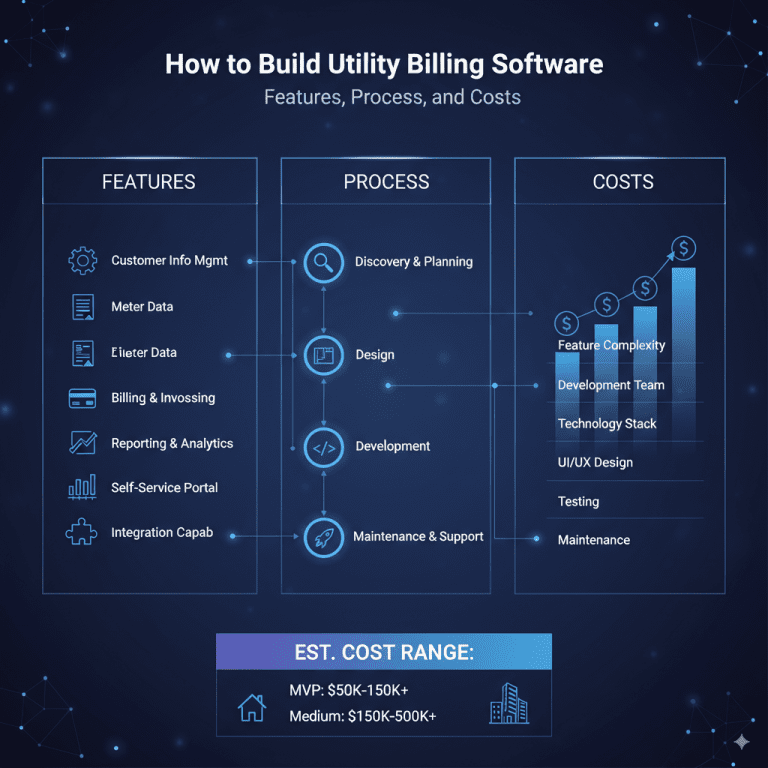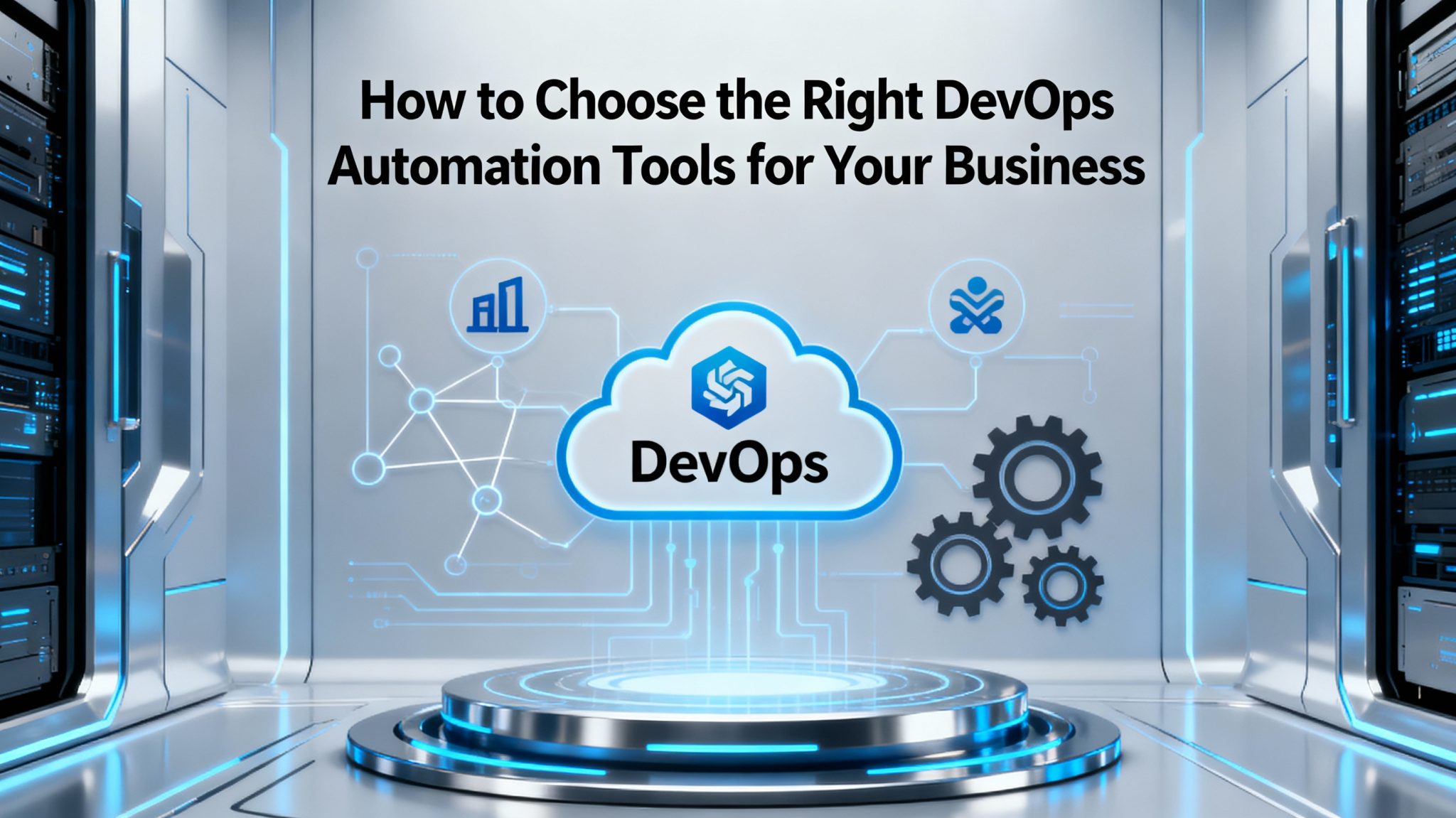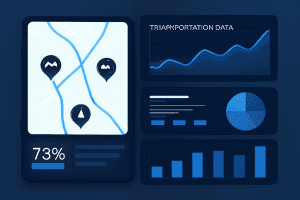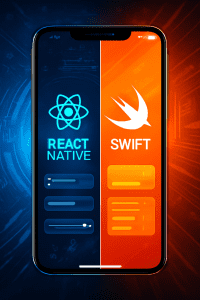Introduction
Utility billing software plays a critical role in managing and automating billing processes for services like electricity, water, gas, and telecom. With the increasing demand for efficient, accurate, and user-friendly billing systems, businesses and utility providers are looking to build tailored software solutions that streamline operations, reduce errors, and enhance customer satisfaction.
This blog offers a comprehensive guide on how to build utility billing software, detailing essential features, the development process, and approximate costs. For leveraging AI and advanced analytics in billing systems, explore TechOTD’s AI solutions and their technology blog.
Essential Features of Utility Billing Software
1. Meter Data Management
-
Integration with smart meters and IoT devices
-
Automated or manual meter reading inputs
-
Real-time data capture and monitoring
2. Billing and Invoice Generation
-
Usage-based billing with flexible tariff plans
-
Automated invoice generation and delivery (email, SMS, print)
-
Multi-utility and multi-rate support
3. Payment Processing
-
Support for multiple payment gateways and methods
-
Online payment portals and mobile payment integration
-
Automatic payment reconciliation
4. Customer Account Management
-
User profiles and service history tracking
-
Customized billing notifications and alerts
-
Self-service portals for bill viewing and payment
5. Usage Analytics and Reporting
-
Detailed consumption reports and trends
-
Revenue analytics and forecasting
-
Exportable reports for audits and compliance
6. Integration Capabilities
-
ERP and CRM software integration
-
Taxation and regulatory compliance modules
-
APIs for third-party services and partner systems
7. Security and Compliance
-
Data encryption and secure user authentication
-
Compliance with local regulations and standards (e.g., GDPR, PCI-DSS)
The Development Process
1. Requirement Analysis
-
Engage stakeholders to gather business needs and regulatory requirements.
2. System Design
-
Architect the software with scalability, security, and usability in focus.
3. Technology Stack Selection
-
Choose technologies aligned with project scope (e.g., cloud platforms, databases, front-end frameworks).
4. Development and Integration
-
Develop modules for meter data, billing algorithms, payment gateways, and customer portals.
-
Integrate with hardware devices and legacy systems.
5. Testing
-
Conduct rigorous unit, integration, security, and user acceptance testing (UAT).
6. Deployment and Training
-
Deploy on-premises or cloud-based environments.
-
Train users and administrators for smooth adoption.
7. Maintenance and Support
-
Provide continuous updates, bug fixes, and improvement features.
Cost Factors and Estimates
-
Software Complexity: More utilities supported and features increase cost.
-
Technology Choices: Cloud vs on-premises, choice of databases and frameworks affects budget.
-
Integration Needs: Costs rise with custom hardware and third-party system integrations.
-
Security Requirements: Higher security standards require specialized investments.
-
Development Team Location: Offshore teams may reduce costs but require effective management.
Estimated costs vary widely:
-
Basic utility billing software: $50,000 to $150,000
-
Mid-range solutions with integrations: $150,000 to $500,000
-
Enterprise-grade, scalable platforms: $500,000+
Leveraging AI and Analytics
AI-driven predictive analytics enhances billing accuracy, fraud detection, and customer personalization. Automation powered by AI reduces manual errors and accelerates billing cycles.
Explore how predictive analytics reshapes business software:
Predictive Analytics Software Development.
Why Partner with Experts Like TechOTD
TechOTD offers end-to-end software development expertize in building secure, scalable utility billing systems integrated with AI and cloud technologies. They follow agile methodologies ensuring rapid delivery aligned with business needs.
Discover their services:
TechOTD Software Development Services.
Conclusion
Building utility billing software requires a harmonious blend of domain understanding, technical expertise, and regulatory compliance. Clear requirement gathering, incorporating key features, and partnering with experienced developers help ensure that the final solution is efficient, scalable, and user-friendly.
Investing in AI, cloud, and secure integrations will future-proof your billing system and enhance customer experience. Start planning your utility billing software journey today with professional guidance and innovative technology partners.
FAQs
Q1: What are must-have features for utility billing software?
Meter data management, billing automation, payment processing, customer portals, and reporting.
Q2: How long does it take to develop utility billing software?
Typically 6 to 12 months depending on complexity and integrations.
Q3: Can AI improve utility billing systems?
Yes, for predictive analytics, fraud detection, and workflow automation.
Q4: What are cost drivers for utility billing software?
Features, integration needs, technology stack, and security compliance.
Q5: Is cloud deployment suitable for utility billing?
Yes, cloud offers scalability, availability, and easier updates for billing systems.











